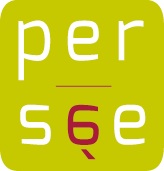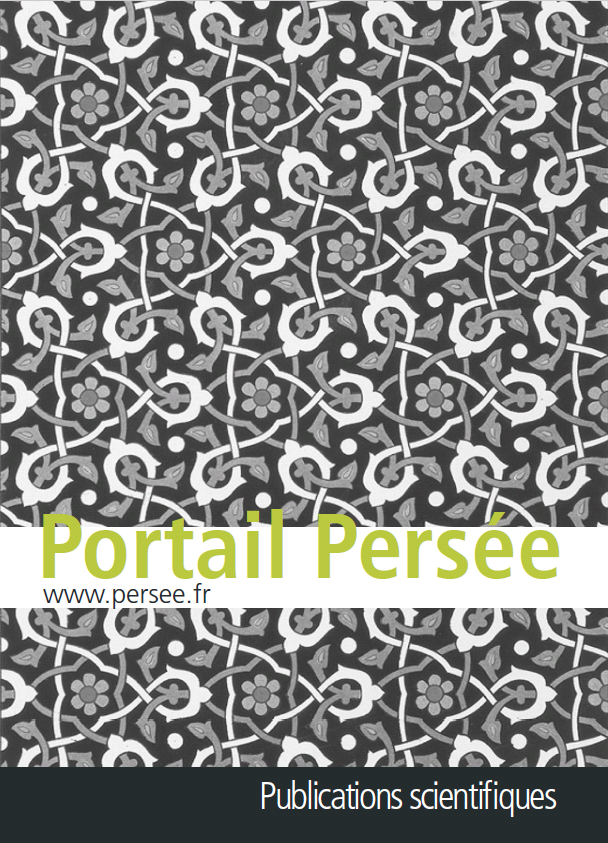 Opened in 2005, the Persée portal brings together complete collections of journals, conference proceedings, series and books. It now hosts more than 400 collections, representing over one million documents, with new titles added regularly. These scientific publications are mainly in the human and social sciences but the earth and environmental sciences are also covered. In compliance with the editorial and documentary policy of the Persée portal, they are selected to ensure their relevance to current research, without limitation to the history of science alone. The collection of publications extends from the 19th to the 21st century (the oldest scientific article distributed dates back to 1840). This extensive chronological coverage allows the milestones of scientific literature to be highlighted and contextualized.
Opened in 2005, the Persée portal brings together complete collections of journals, conference proceedings, series and books. It now hosts more than 400 collections, representing over one million documents, with new titles added regularly. These scientific publications are mainly in the human and social sciences but the earth and environmental sciences are also covered. In compliance with the editorial and documentary policy of the Persée portal, they are selected to ensure their relevance to current research, without limitation to the history of science alone. The collection of publications extends from the 19th to the 21st century (the oldest scientific article distributed dates back to 1840). This extensive chronological coverage allows the milestones of scientific literature to be highlighted and contextualized.
The originality of the Persée portal is based on the convergence of heritage digitization and electronic publishing, the paperless online availability of vast printed collections and the use of structuring, encoding and distribution techniques. Each collection of journals, conference proceedings, serial publications and books is faithfully reproduced in its material and intellectual organization to constitute a structured set of documents that is contextualized and historicized and the documents linked together.
Structuring. Many options are available to work with digitized collections using the same features as those usually available for natively digital documents: selection of the article as the basic documentary unit, joint full text and metadata searches, rendition of the editorial organization of the publication since its creation and the internal layout of the documents, navigation in the tables of contents, article outlines and lists of the illustrations, document linking through a cross-referencing mechanism, author indexes, reference export into bibliographic management tool formats and facsimile downloads (PDF).
Open dissemination. To increase the visibility of publications, Persée advocates and favours an open distribution of metadata and full text, in agreement with publishers. The services associated with the text are also available without segmentation of the services offered on the portal. In this way, scientific communities can easily access the information they have produced that is essential to the continuation of their research. Thus, society as a whole can benefit from the results of their output.
Referencing. Persée is actively pursuing a policy of referencing digitized content to improve visibility and access. At the heart of this action is the systematic use of standards to describe and structure metadata and texts (METS, MODS, DC, marcXML, MADS, KBART, TEI) and the implementation of different availability and exchange protocols (OAI-PMH, Web services, Sparkl EndPoint). In addition, DOIs are systematically assigned to items registered and purchased from crossRef.
To accommodate a diversity of documentary research practices, Persée strives to make its content offer known through a wide range of tools. Agreements have been made with the main publishers of bibliographic databases and discovery tools (Exlibris, Ebsco, Proquest). This is how researchers can access publications available on the Persée portal using the tools provided by university libraries. Other reporting tools for researchers or information and library professionals are also provided: Mir@bel (knowledge base of French-language HSS journals), EZB (electronic library of periodicals), Bacon (a French national knowledge base for electronic documentation) or Isidore (HSS search engine).
Referencing of Persée’ documents by Google Scholarpromotes better visibility by research communities, combines Persée’ functionalities with Persée’ content (quotations beyond persee.fr, suggested articles, alerts,etc.) and enhances the results of the all-purpose Google search engine with scholarly content.
Finally, the microformats of schema.org are used for a semantic tagging of Persée’ content, thus facilitating indexing and ranking by search engines.
Sustainability. Persée is involved in a long-term preservation programme for digital collections in partnership with CINES (Centre Informatique National de l’Enseignement Supérieur). As the Operator for the archiving of digital data and documents produced by the French higher education and research community, CINES stores the TIFF, PNG, SVG and XML format files produced by Persée, in compliance with the relevant standards (Open Archival Information System – OAIS).
To monitor the level of consultation, the Persée portal uses two complementary tools: :
● AWStats, which analyses access to the hosting server of the www.persee.fr site. All these statistics are openly accessible. This tool makes it possible to identify the geographical origin of visitors, the operating systems they use, the sites that led them to the Persée portal (these referers can be web search engines, desk-top reference tools, catalogues, etc.), the number of visits and unique visitors, the number of pages retrieved during a visit. It is also possible to find out which journal and article are the most viewed. These statistics are provided on a monthly basis.
● Counter Project recommendations, which provide more qualitative data about the portal’s documents and services. These statistics make it possible to measure the use of a documentary unit (article, report) and additional services such as cross-referencing, access to summaries or even the export of bibliographic references. This service is offered to publishers who have entrusted their publications to Persée and to universities who wish to know how Persée is used on their campuses. This data includes the number of full-text documents that were consulted and the number of PDF downloads. The following types of report are available: JR1, JR3, JR4 and JR5.


